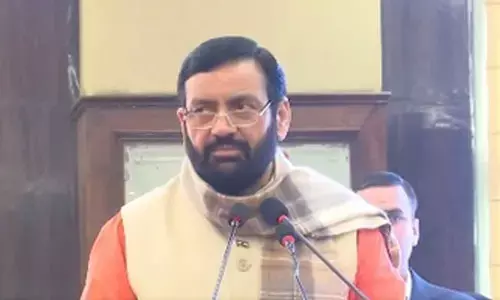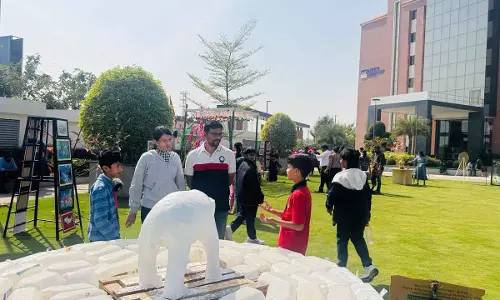Bring back the 'Bolly good' lip-synch fad in songs

'Bolly good' lip-synch fad in songs
Hindi mainstream has served up a couple of songs lately that managed to grab eyeballs in an old-Bollywood way.
Hindi mainstream has served up a couple of songs lately that managed to grab eyeballs in an old-Bollywood way.
The movies that feature the respective songs are lined up for OTT release, but that hasn't taken away the filmi touch. "Param sundari", filmed on Kriti Sanon in "Mimi", and "Chura ke dil mera 2.0" in "Hungama 2", bringing back Shilpa Shetty, have been trending upon release within a span of days from each other.
The songs, dance numbers both, interestingly represent the two conflicting schools of thought in the music industry. "Param sundari" is an original song penned by Amitabh Bhattacharya and scored by AR Rahman for Shreya Ghoshal. "Churake dil mera 2.0" credits Anu Malik as composer and is a remix of an old hit the composer created on Rani Malik's lyrics for the 1994 hit "Main Khiladi Tu Anari".
These two numbers in no way herald a revival of Bollywood music, which in recent years has been weighed down by a new-age filmmaking approach that is reluctant to accommodate songs in the narrative. Film songs, as we know them in the traditional sense, have been gasping for survival overall.
Interestingly, these two songs seem to be doing what Salman Khan's "Seeti maar" ("Radhe") struggled to do earlier this year. At least, these numbers have got people taking note of Bollywood music again for what it's worth, and not for star value or hype.
An interesting fact here is that "Mimi" and "Hungama 2" are films slated for OTT release. In other words, these films will cater to an audience that increasingly demands realism in entertainment more than larger-than-life absurdity. In this context, Hindi film songs, especially the lip-synched variety as these two numbers, have traditionally represented escapism.
If Hindi filmmakers are really looking for a way to revive films songs, the key perhaps lies in understanding that above notion. Film songs have to be served with a pinch of larger-than-life verve, no matter how realistic the film in question may be.
There is, after all, a reason why most film songs have failed to leave an impact in recent years. Most songs, barring item numbers, have been used as part of a film's background score lately, thereby robbing these numbers of the obvious advantage of a star's direct participation.
When a song is lip-synched by the star/s on the screen, the impact is immediate. It leaves a mark in the minds of millions of fans almost automatically when they see their favourite star/s 'singing' the song on screen.
Case in point: A sizeable chunk of comments about the "Mimi" and "Hungama 2" songs on the official YouTube pages are about Kriti Sanon's dance or Shilpa Shetty's yoga-fit look. The audience of any film -- whether released on OTT or big screen -- is mainly interested in the stars, and the star's active participation will always draw preliminary attention beyond, which, of course, the song's merit would decide its popularity.
GenNow filmmaking, especially when it creates films for direct-to-OTT release, has very little scope for old-Bollywood style, lip-synched numbers. Ninety per cent films nowadays, influenced by Hollywood-style realism of narration, don't leave scope for lip-synch in songs.
So, songs in films are nowadays mostly blended with background score. Such songs do not leave an impact in the audience mind the way lip-synched songs would.
Which is an irony because, take a look at the most popular films songs in recent months and you discover they have all been lip-synched numbers. From "Burj khalifa" in "Laxmii" to "Nadiyon paar" in "Roohi", recent hit songs bear testimony to this fact.
At a time when the rising indie music culture and the music video wave have overshadowed the film song, a dash of larger-than-life lip-synch could perhaps be the way out for the Hindi film song to find new life. It could be worth an experiment, trying to mix old-school song picturisation with new-age storytelling. Our filmmakers, after all, have been past masters at mix and remix.















